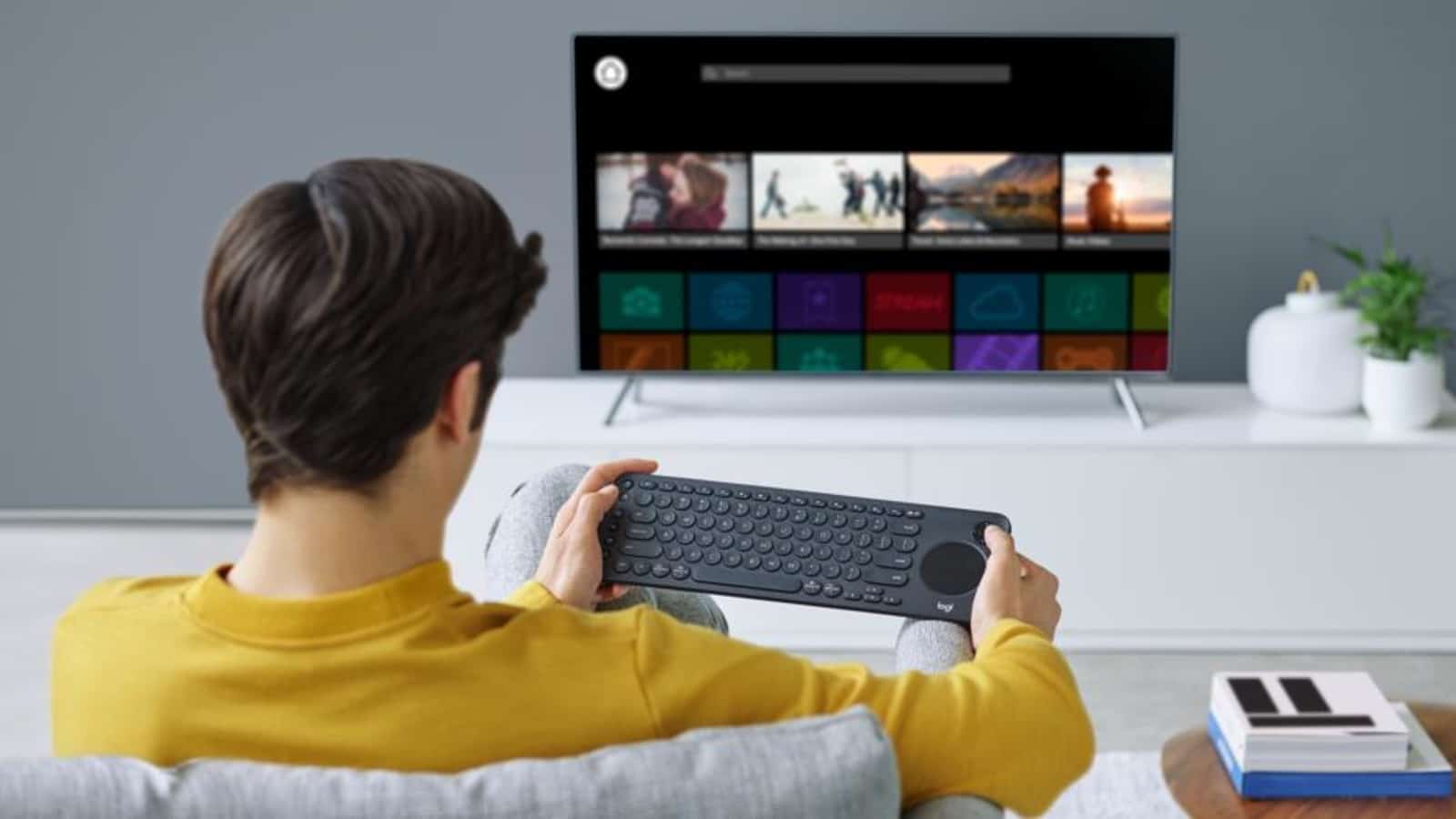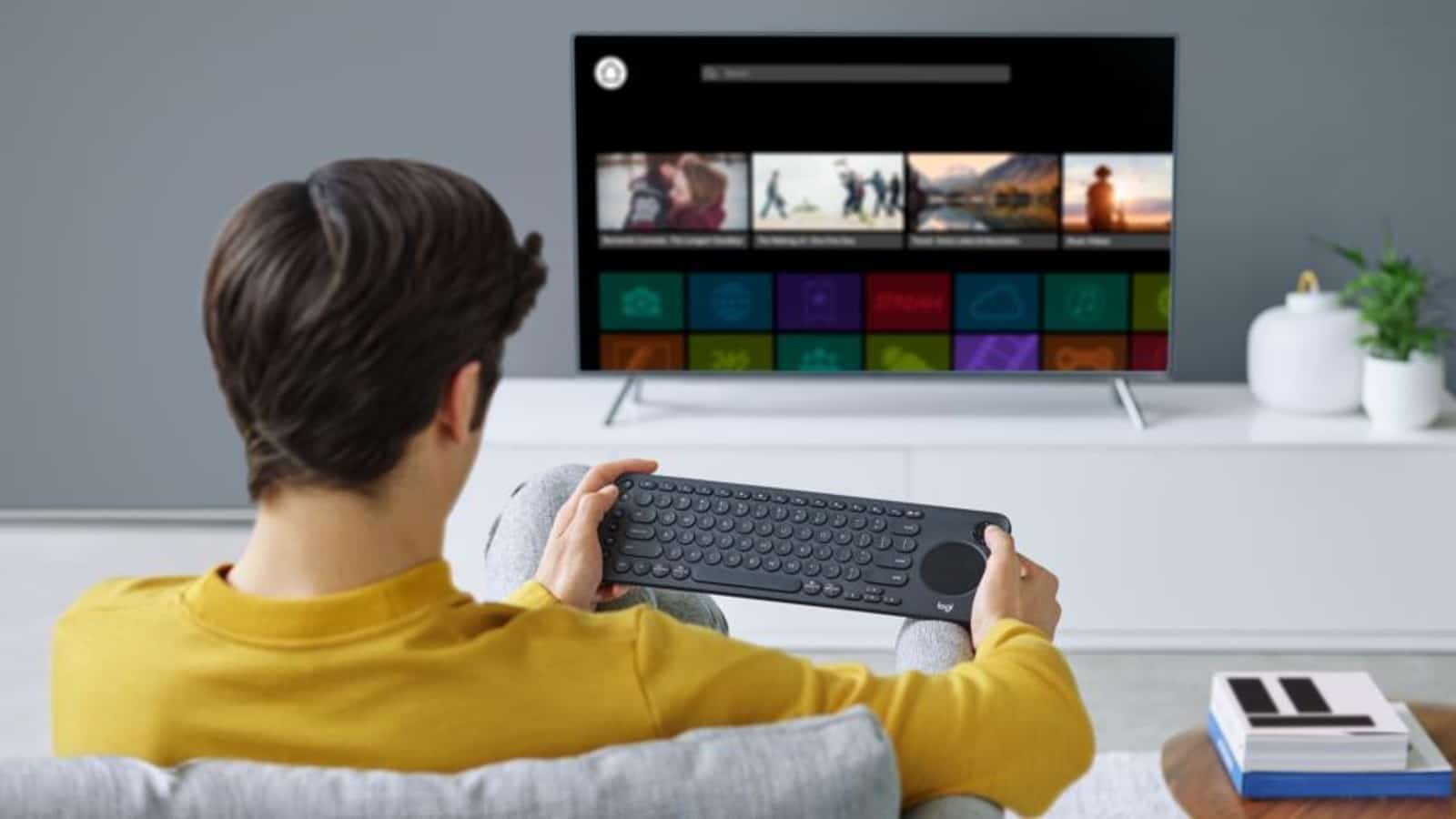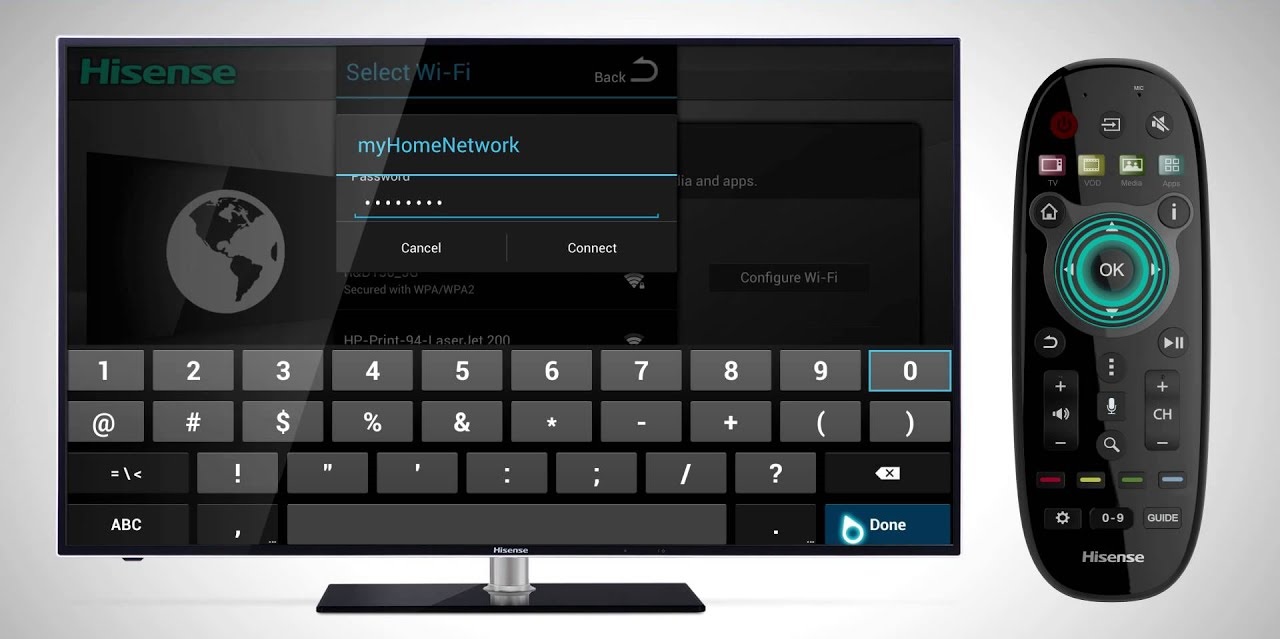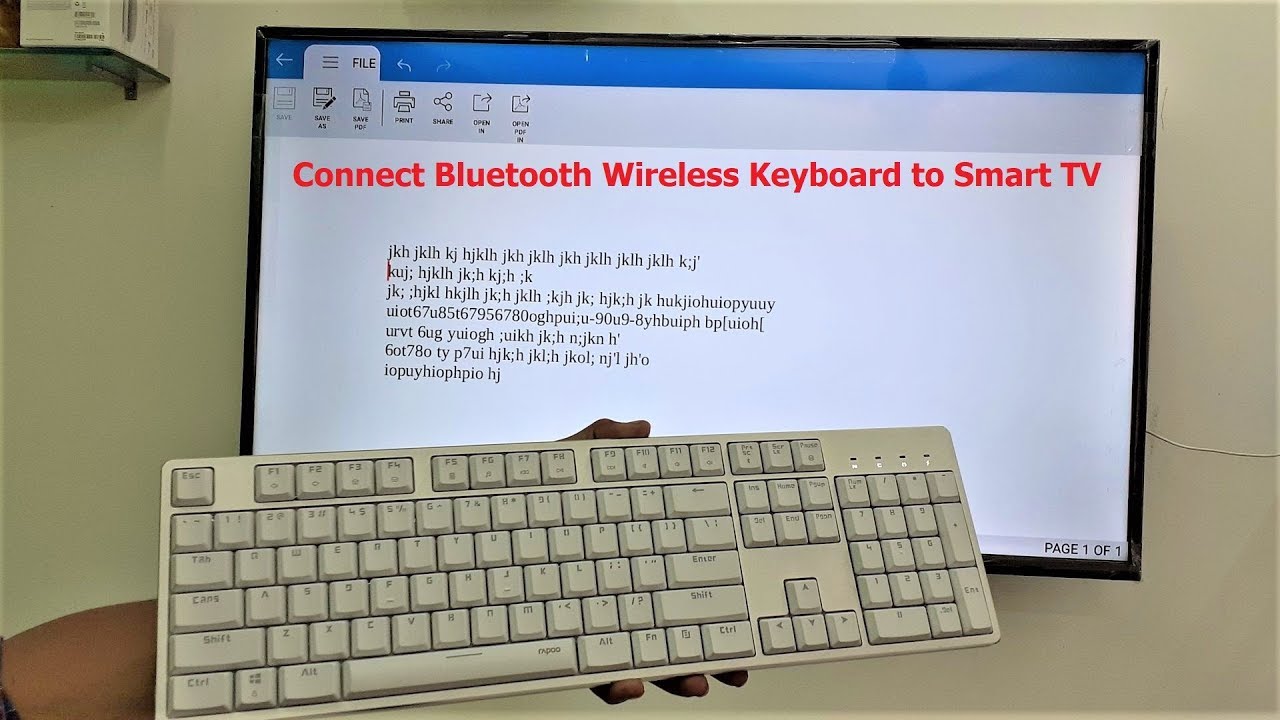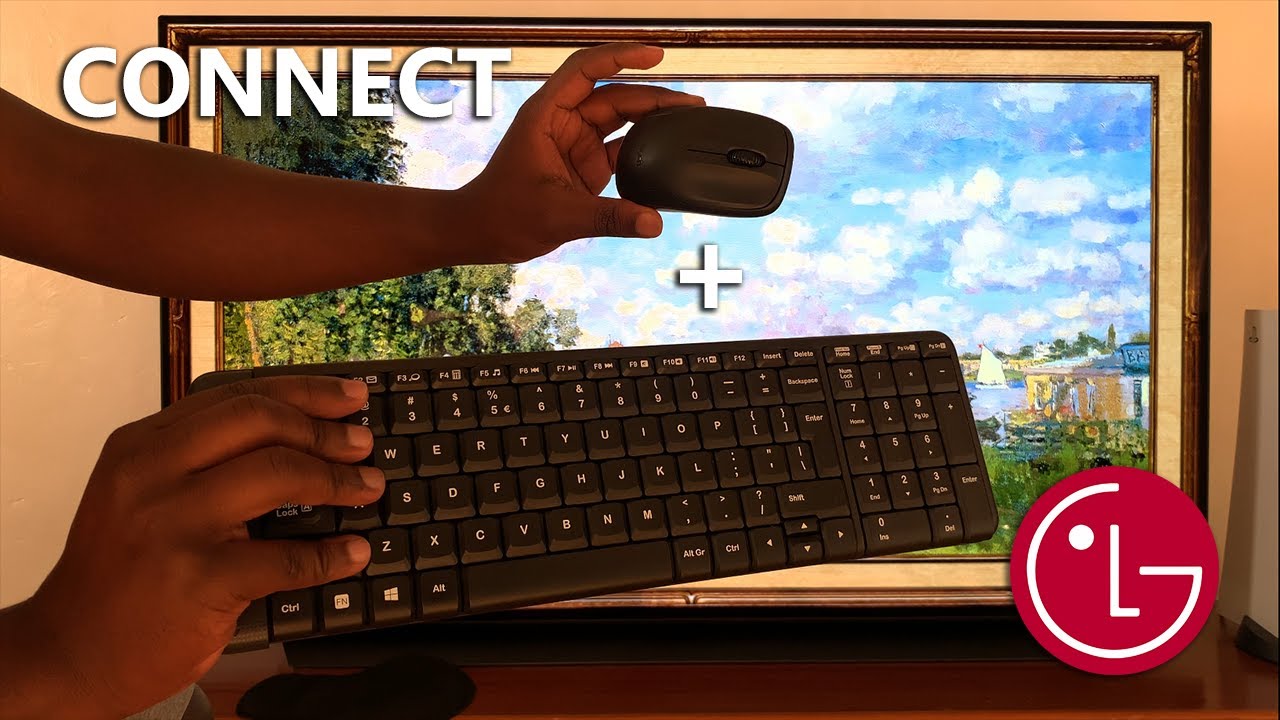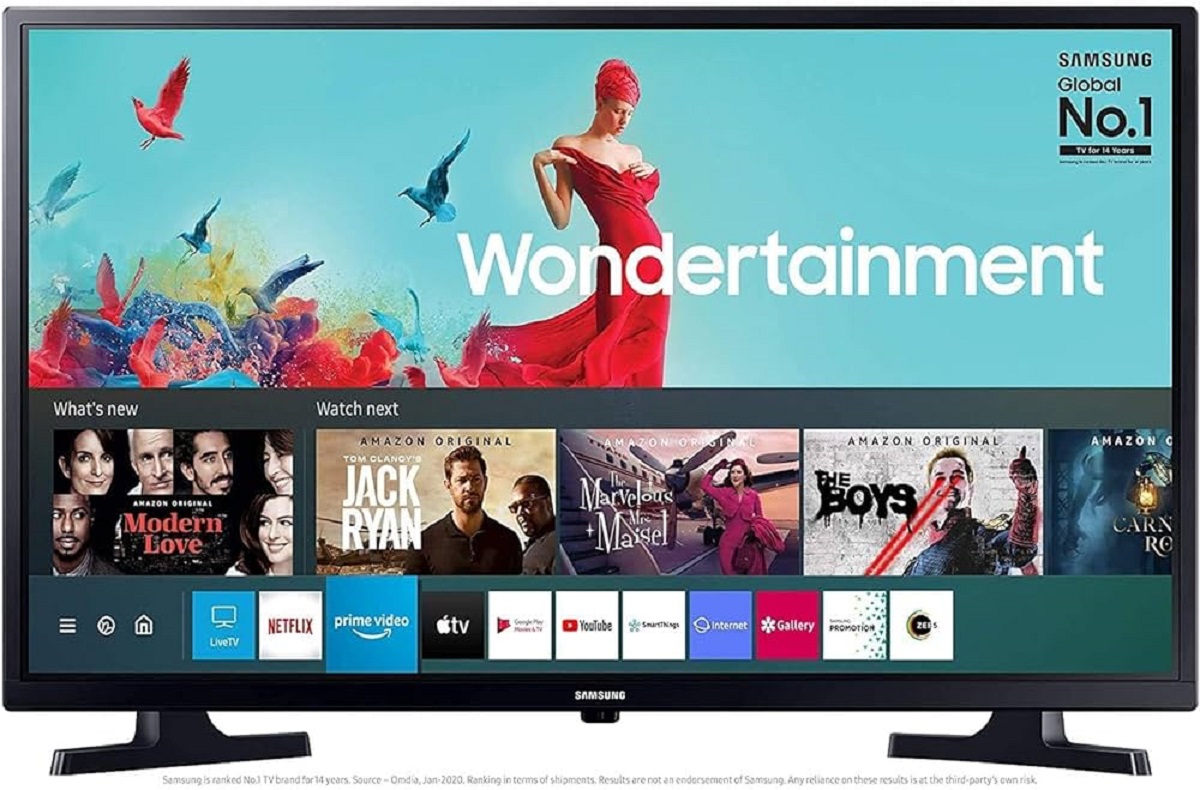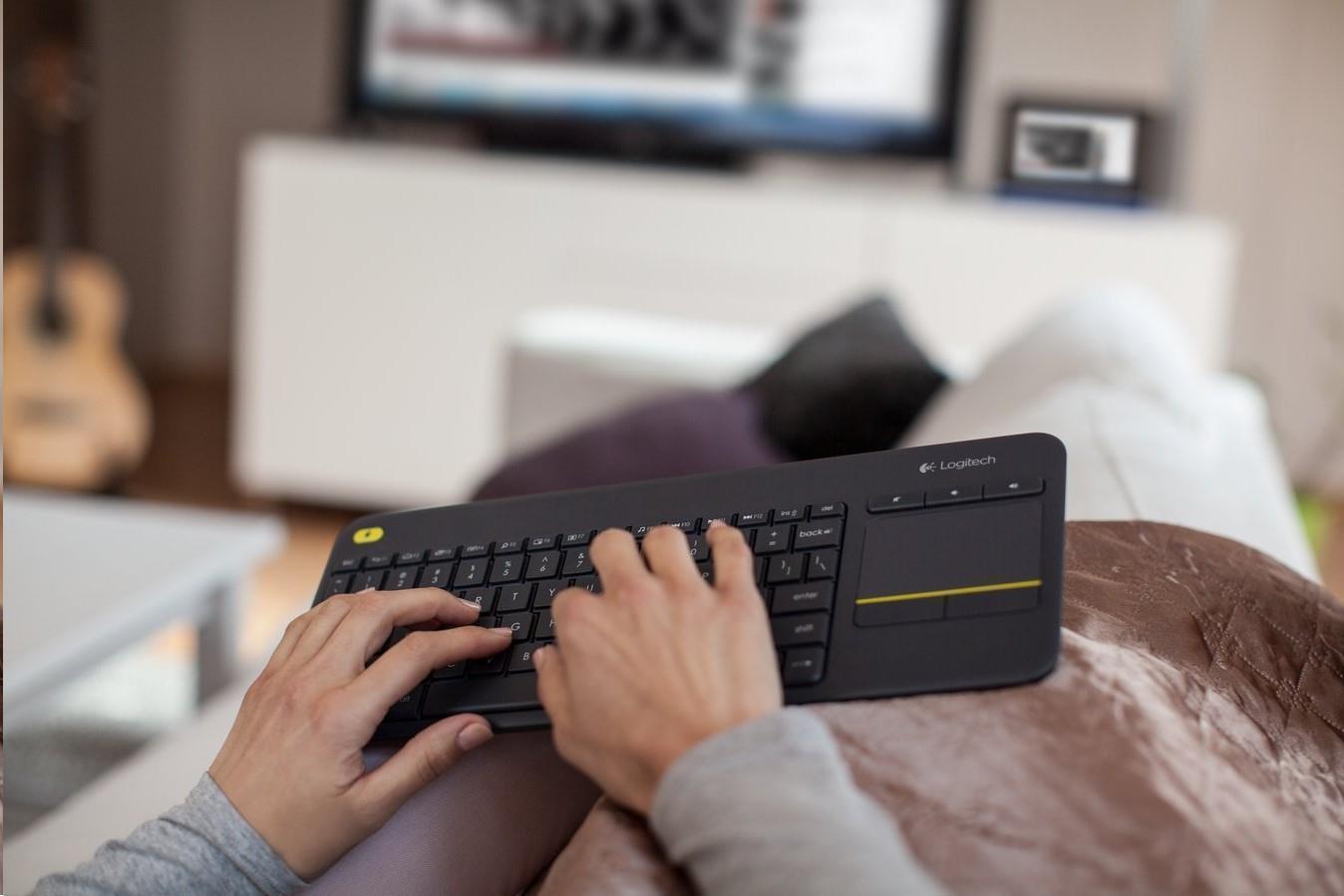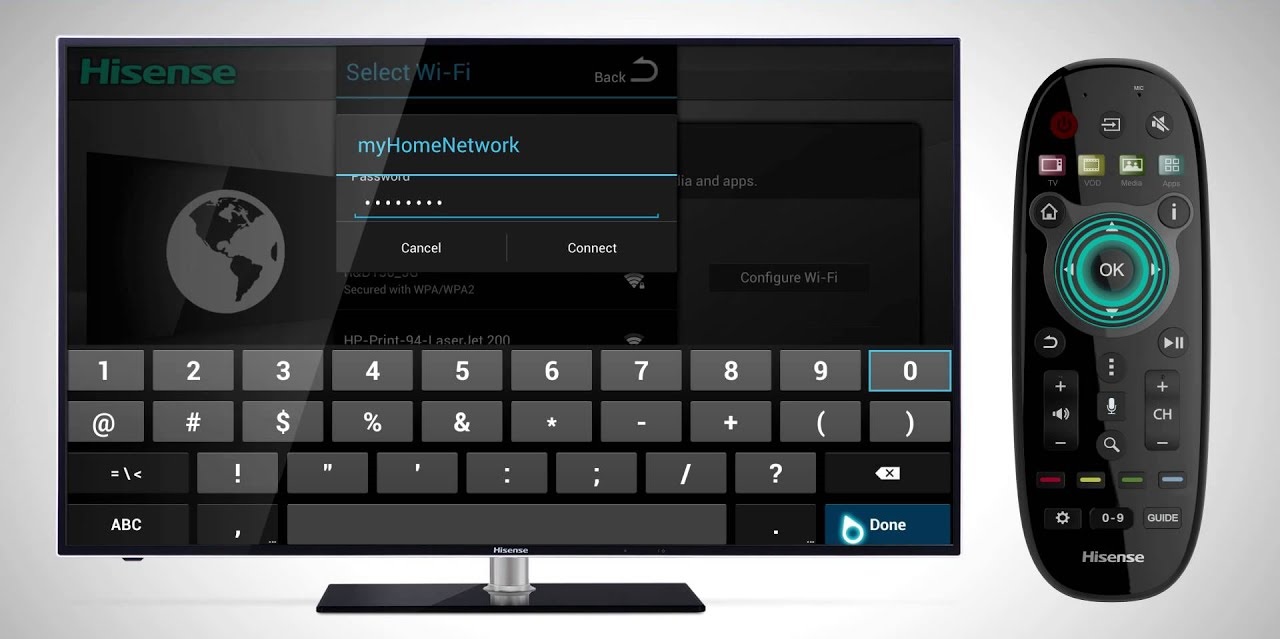Why Do You Need a Keyboard for a Smart TV?
Smart TVs have revolutionized the way we consume entertainment. With their internet connectivity and a wide range of streaming options, you can access a vast library of movies, TV shows, and web content right from the comfort of your living room. However, navigating through menus and typing in URLs using a traditional TV remote control can be cumbersome and time-consuming.
This is where a keyboard comes in handy. By connecting a keyboard to your smart TV, you can streamline your browsing experience and enhance your ability to control and interact with the smart TV interface. Whether you want to search for a specific movie or TV show, enter login credentials for streaming services, or even send emails and browse the internet, a keyboard allows for much faster and more accurate input compared to using a remote control.
Typing on a keyboard also provides a more familiar and comfortable experience, especially if you are accustomed to using a computer or a mobile device. It eliminates the frustration of navigating through an on-screen keyboard, which can be slow and prone to typos. With a keyboard, you can effortlessly type using a physical QWERTY layout, just like you would on a computer, making it easier to input text and search for content on your smart TV.
Moreover, a keyboard enables you to take full advantage of the features and capabilities of your smart TV. Many popular streaming apps and platforms offer enhanced functionalities that can only be accessed through text input. For example, you can use a keyboard to make specific searches within a streaming app, enter promotional codes, or even participate in online forums and discussions. A keyboard opens up a world of possibilities and makes your smart TV experience more versatile and efficient.
Lastly, a keyboard can be particularly useful for individuals with accessibility needs or those who may have difficulty using a remote control. The larger and easier-to-press keys on a keyboard can provide a more accessible and comfortable option for input. It allows individuals with motor control limitations or dexterity issues to navigate menus, type, and interact with the smart TV interface with greater ease.
Choosing the Right Keyboard for Your Smart TV
When it comes to selecting a keyboard for your smart TV, there are a few factors to consider to ensure compatibility and a seamless user experience.
Wireless or Wired: Decide whether you prefer a wireless or wired keyboard. Wireless keyboards offer more flexibility and freedom of movement, while wired keyboards ensure a stable and uninterrupted connection.
Compatibility: Check the compatibility of the keyboard with your smart TV. Ensure that it supports the operating system of your smart TV and has the necessary connectivity options, such as Bluetooth or USB.
Layout and Size: Consider the layout and size of the keyboard. Look for a keyboard with a layout that you are comfortable with, such as a QWERTY layout. Additionally, consider the size of the keys and the overall form factor of the keyboard to suit your personal preferences.
Additional Features: Some keyboards come with extra features like backlighting, multimedia keys, touchpad, or a built-in trackball. Determine if these additional features are important to you and if they will enhance your user experience with the smart TV.
Battery Life: If you opt for a wireless keyboard, check the battery life and charging options. Look for keyboards with long-lasting battery life or those that can be easily recharged.
User Reviews: Before making a purchase, read user reviews and ratings to get an idea of the keyboard’s performance, durability, and overall satisfaction among other smart TV users.
Price: Set a budget for your keyboard purchase. There are various options available at different price points, so consider your needs and balance them with your budget.
By carefully considering these factors, you can find a keyboard that suits your specific requirements and enhances your smart TV experience. Whether you opt for a wireless or wired keyboard, the key is to choose one that provides seamless compatibility, comfortable typing experience, and the necessary features to make navigating your smart TV a breeze.
Connecting the Keyboard to Your Smart TV
Connecting a keyboard to your smart TV is a simple process that can greatly enhance your browsing and typing experience. Here’s a general guide on how to connect a keyboard to your smart TV:
1. Check the Connectivity Options: Determine the available connectivity options on your smart TV. Most smart TVs support USB and Bluetooth connections, so make sure your keyboard is compatible with one of these options.
2. USB Connection: For keyboards with a USB connector, simply plug the USB cable into one of the USB ports on your smart TV. Your TV will detect the keyboard automatically, and you can start using it right away. Make sure the keyboard is within the recommended proximity for a reliable connection.
3. Bluetooth Connection: If your keyboard supports Bluetooth, start by putting it in pairing mode. Refer to the keyboard’s user manual for specific instructions on how to do this. On your smart TV, navigate to the Bluetooth settings and enable Bluetooth. Select the keyboard from the list of available devices, and follow any additional on-screen instructions to complete the pairing process.
4. Troubleshooting Bluetooth Connectivity: If you encounter any issues connecting your keyboard via Bluetooth, ensure that both the smart TV and keyboard are in pairing mode and within range of each other. Also, check that the keyboard’s battery level is sufficient. Restarting both the TV and keyboard can often resolve connection problems. Consult the user manual or manufacturer’s website for troubleshooting specific to your keyboard model.
5. Additional Configuration (if required): In some cases, your smart TV may require additional configuration to recognize and fully utilize the connected keyboard. Refer to the TV’s user manual or support documentation for any specific steps or settings adjustments that may be necessary.
6. Test and Enjoy: Once the keyboard is connected and recognized by your smart TV, give it a test run. Navigate through menus, type in URLs, search for content, and experience the convenience of a physical keyboard for interacting with your smart TV interface.
Keep in mind that specific steps may vary depending on your smart TV brand and model. Always refer to the user manual or support documentation provided by the TV manufacturer or keyboard manufacturer for detailed instructions tailored to your device.
Connecting a keyboard to your smart TV can greatly enhance your browsing and interaction capabilities, making it more convenient and efficient to navigate through menus, search for content, and input text. Follow these steps and start enjoying a more streamlined smart TV experience with the convenience of a keyboard.
Setting Up the Keyboard on Your Smart TV
Once you have successfully connected the keyboard to your smart TV, you may need to perform some setup steps to ensure optimal functionality. The specific setup process may vary depending on your TV model and operating system, but here are some general guidelines:
1. Keyboard Recognitions: After connecting the keyboard, your smart TV should automatically recognize it and enable it for use. In most cases, you can start using the keyboard right away without additional setup.
2. Keyboard Language and Input Settings: Access the settings menu on your smart TV and navigate to the language and input settings. Here, you can select the desired keyboard language and adjust any other input-related preferences that suit your needs. This step ensures that the keyboard recognizes and types in the correct language, making it easier for you to search and input text accurately.
3. Customizing Keyboard Shortcuts (if available): Some smart TVs allow you to customize keyboard shortcuts to perform specific actions or launch particular applications. Explore the TV’s settings to see if this option is available and customize shortcuts to enhance your user experience.
4. Accessibility Options: If you have specific accessibility needs, such as visual impairments or motor control limitations, check if your smart TV offers any accessibility options. These settings can help optimize the keyboard’s functionality for a more tailored and accessible experience.
5. Firmware and Software Updates: Ensure that both your smart TV and the connected keyboard have the latest firmware or software updates installed. Regular updates can introduce new features, improve compatibility, and enhance overall performance.
6. Additional Configuration (if required): Depending on your smart TV’s operating system and compatibility with keyboards, there may be additional configuration steps you need to follow. Consult the TV’s user manual or support documentation for any specific settings adjustments or setup procedures that may be necessary.
7. Test and Troubleshoot: Once you have completed the setup steps, thoroughly test your keyboard’s functionality on the smart TV. Enter text, navigate through menus, and perform various tasks to ensure that the keyboard is working as intended. If you encounter any issues or unexpected behavior, refer to the TV’s user manual or contact the manufacturer’s support for troubleshooting assistance.
By following these setup steps, you can optimize the functionality of your keyboard on your smart TV and ensure a smooth and efficient user experience. Remember to refer to the specific instructions provided by your TV manufacturer for any model-specific setup requirements or configurations.
Navigating and Typing with the Keyboard on Your Smart TV
Once your keyboard is connected and set up on your smart TV, you can begin to navigate and type with ease. Here are some tips for efficient navigation and typing using a keyboard on your smart TV:
1. Menu Navigation: Use the arrow keys on your keyboard to navigate through the smart TV menu. The up, down, left, and right arrows correspond to the directional buttons on a remote control. You can quickly move between different options, apps, and settings without the need to scroll with a remote control.
2. Mouse Functionality: If your keyboard has a touchpad or trackball, you can use it as a mouse substitute. The touchpad allows you to move the cursor on the screen, making it easier to select options, enter URLs, and interact with web pages. Simply slide your finger across the touchpad to move the cursor, and click the touchpad buttons to make a selection.
3. Typing: Probably the most significant advantage of using a keyboard on your smart TV is the ability to type quickly and accurately. Whenever you need to enter text, such as searching for a movie, typing in a URL, or entering login credentials, simply use the keys on the keyboard. The QWERTY layout will feel familiar and natural, allowing you to type with ease. Avoid using the on-screen keyboard whenever possible, as it can be slower and more tedious.
4. Hotkeys and Shortcuts: Many keyboards come with dedicated hotkeys and shortcuts that can help you navigate your smart TV more efficiently. These shortcuts may include buttons for launching specific apps, adjusting volume, controlling media playback, or even taking screenshots. Familiarize yourself with the hotkeys available on your keyboard and take advantage of them to streamline your smart TV experience.
5. Internet Browsing: With a keyboard, browsing the internet on your smart TV becomes much more convenient. Use the arrow keys and mouse functionality (if available) to navigate through web pages, click on links or buttons, and enter text in search bars or forms. The keyboard will make your browsing experience feel more akin to using a computer, saving you time and frustration.
6. Multitasking: If supported by your smart TV, you can use the keyboard to switch between open apps or perform multitasking actions. Check the TV’s documentation or user manual for specific instructions on how to use the keyboard for multitasking on your particular model.
7. Customization Options: Some smart TVs allow you to customize keyboard settings to fit your preferences. Explore the TV’s settings for options such as key repeat rate, scroll speed, or sensitivity adjustments, which can enhance your overall typing and navigation experience.
By utilizing these navigation and typing techniques, you can take full advantage of the keyboard’s capabilities on your smart TV. Enjoy faster and more efficient navigation, seamless typing, and a smoother overall user experience.
Troubleshooting Common Issues with Keyboard on Smart TVs
While using a keyboard on your smart TV can greatly enhance your browsing and typing experience, you may encounter some common issues along the way. Here are some troubleshooting tips to help you resolve these issues:
1. Connectivity Problems: If your keyboard is not connecting to your smart TV, ensure that it is within range and that Bluetooth or USB connectivity is enabled on both devices. Try restarting both the keyboard and the TV, and make sure the batteries in the keyboard are not depleted (if applicable).
2. Lag or Delayed Response: If you notice a lag or delayed response when typing on the keyboard, there are a few potential reasons. First, check if there are any firmware or software updates available for your smart TV. Keeping your TV’s software up-to-date can often resolve performance issues. Additionally, make sure you are not running multiple resource-intensive applications simultaneously, as this can affect the responsiveness of the keyboard input.
3. Incorrect Language Settings: If you experience issues with incorrect language recognition or input, verify that the keyboard language settings on your smart TV match the language you are typing in. Adjust the language settings in the TV’s menu if necessary.
4. Unresponsive Keys: If certain keys on your keyboard are unresponsive or not registering input, try cleaning the keyboard using compressed air or a soft cloth to remove any debris or dust that may be interfering with the keys. If cleaning does not solve the issue, the keys may be physically damaged, and it may be necessary to replace the keyboard.
5. Function Keys Not Working: Function keys on the keyboard, such as media controls or app-launching shortcuts, may require additional configuration or software support from your smart TV. Check the TV’s user manual or support documentation for instructions on setting up and using these function keys.
6. Compatibility Issues: In rare cases, certain keyboards may not be fully compatible with specific smart TV models or operating systems. Check the manufacturer’s specifications and documentation to ensure compatibility before purchasing a keyboard for your smart TV.
7. Resetting and Pairing: As a last troubleshooting step, you can try resetting the keyboard and re-pairing it with your smart TV. Refer to the keyboard’s user manual for instructions on how to perform a reset, and then follow the connection process again.
If none of these troubleshooting steps resolve the issue with your keyboard on your smart TV, it may be helpful to contact the manufacturer’s support or refer to the TV’s support documentation for further assistance. They can provide specific troubleshooting steps or offer product-specific solutions based on the make and model of your smart TV.
By troubleshooting common issues with your keyboard on your smart TV, you can ensure smooth and uninterrupted usage, allowing you to fully enjoy the convenience and improved functionality that a keyboard brings to your smart TV experience.
Conclusion
Using a keyboard with your smart TV can significantly enhance your browsing and typing experience. It provides a more efficient and familiar way of interacting with the smart TV interface, allowing for quick and accurate text input. Whether you’re searching for content, typing in URLs, or navigating through menus, a keyboard offers a convenient alternative to using a standard remote control.
When choosing a keyboard for your smart TV, consider factors such as wireless or wired connectivity, compatibility with your smart TV’s operating system, layout and size, additional features, battery life, user reviews, and budget. By selecting the right keyboard, you can ensure a seamless and tailored experience that suits your needs.
Connecting a keyboard to your smart TV is a straightforward process, whether through USB or Bluetooth. Once connected, take advantage of setup options to customize language settings, assign shortcuts, and optimize accessibility features.
When navigating and typing using a keyboard on your smart TV, utilize arrow keys for menu navigation, a touchpad or trackball for cursor movement, and the familiar QWERTY layout for faster and more accurate typing. Take advantage of customizable shortcuts and explore various browsing capabilities offered by your smart TV.
If you encounter any issues with your keyboard, troubleshoot common problems such as connectivity, lag, language settings, unresponsive keys, function key configuration, compatibility, and perform resets and re-pairing if necessary.
In conclusion, integrating a keyboard with your smart TV enhances your overall user experience by providing a more efficient, comfortable, and versatile means of navigation and text input. With the right keyboard and proper setup, you can enjoy a seamless and intuitive smart TV experience that maximizes your enjoyment and productivity.







